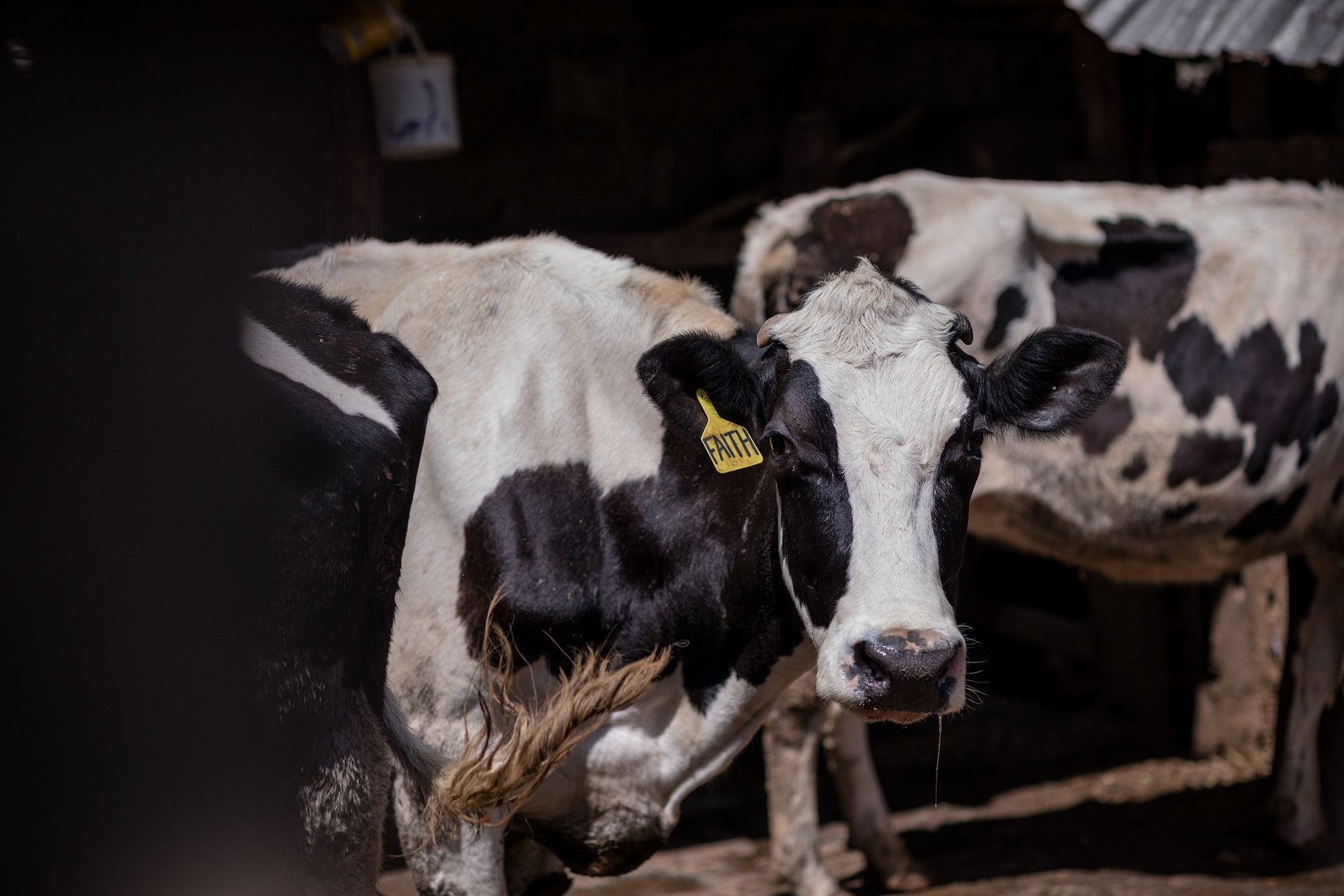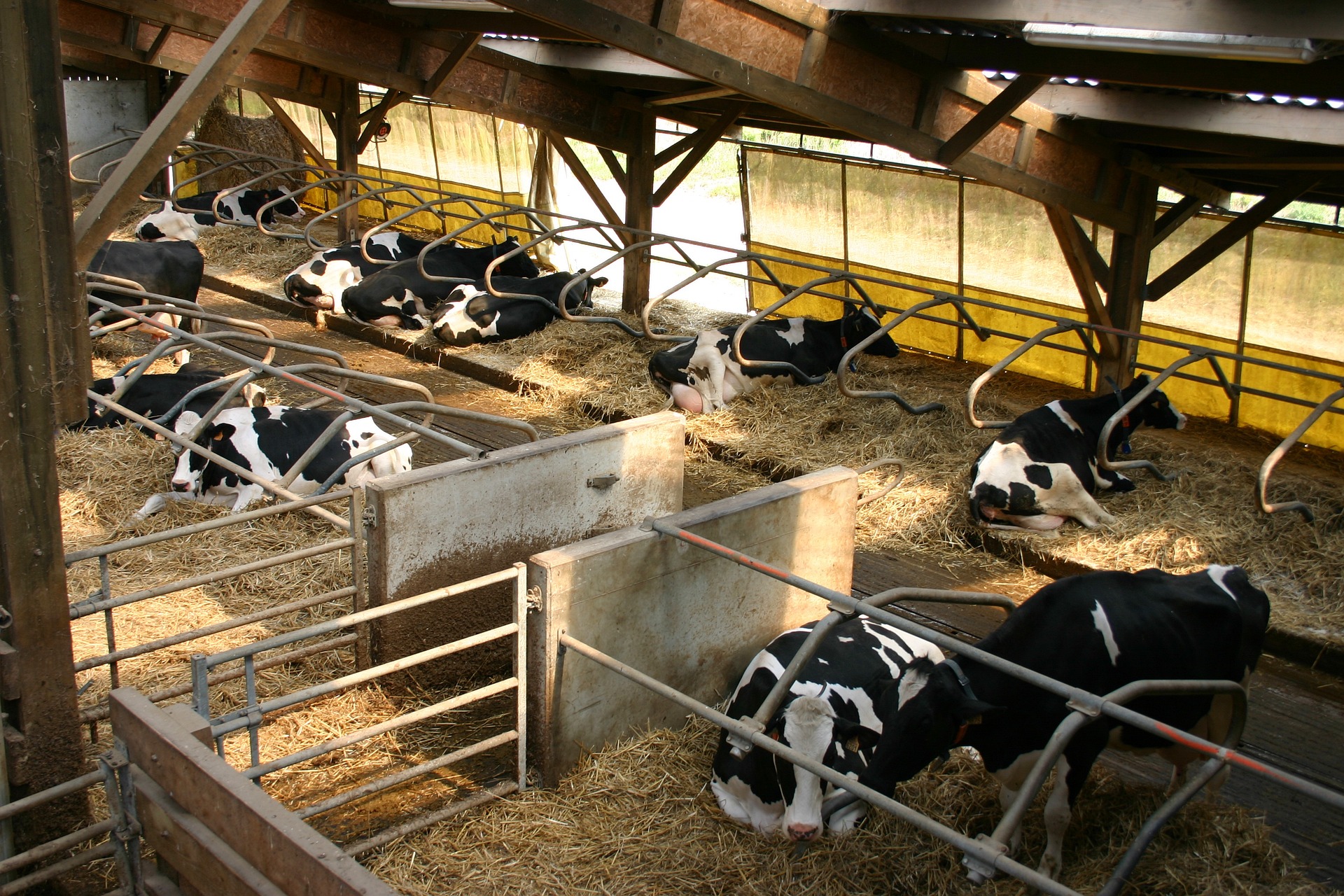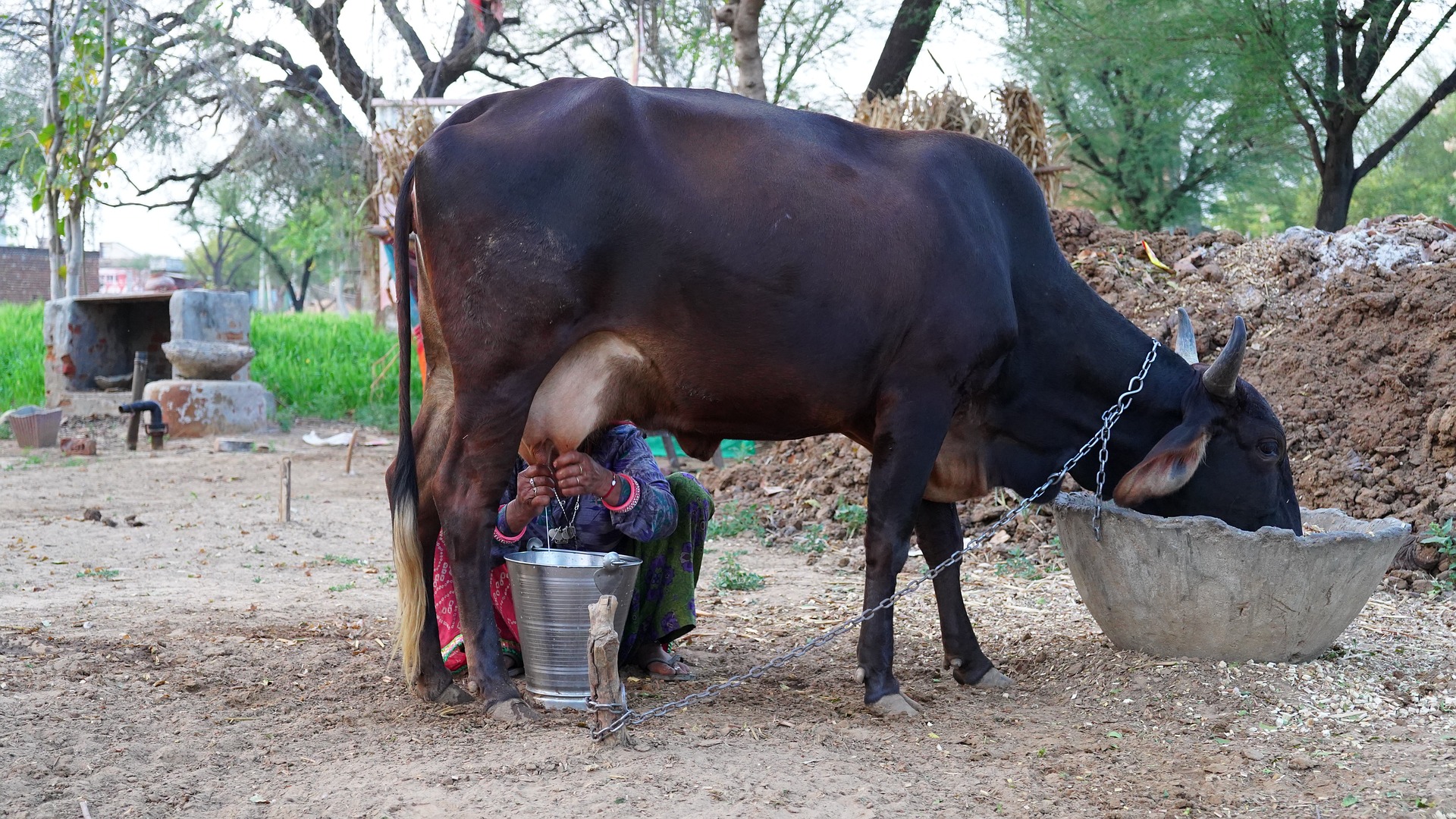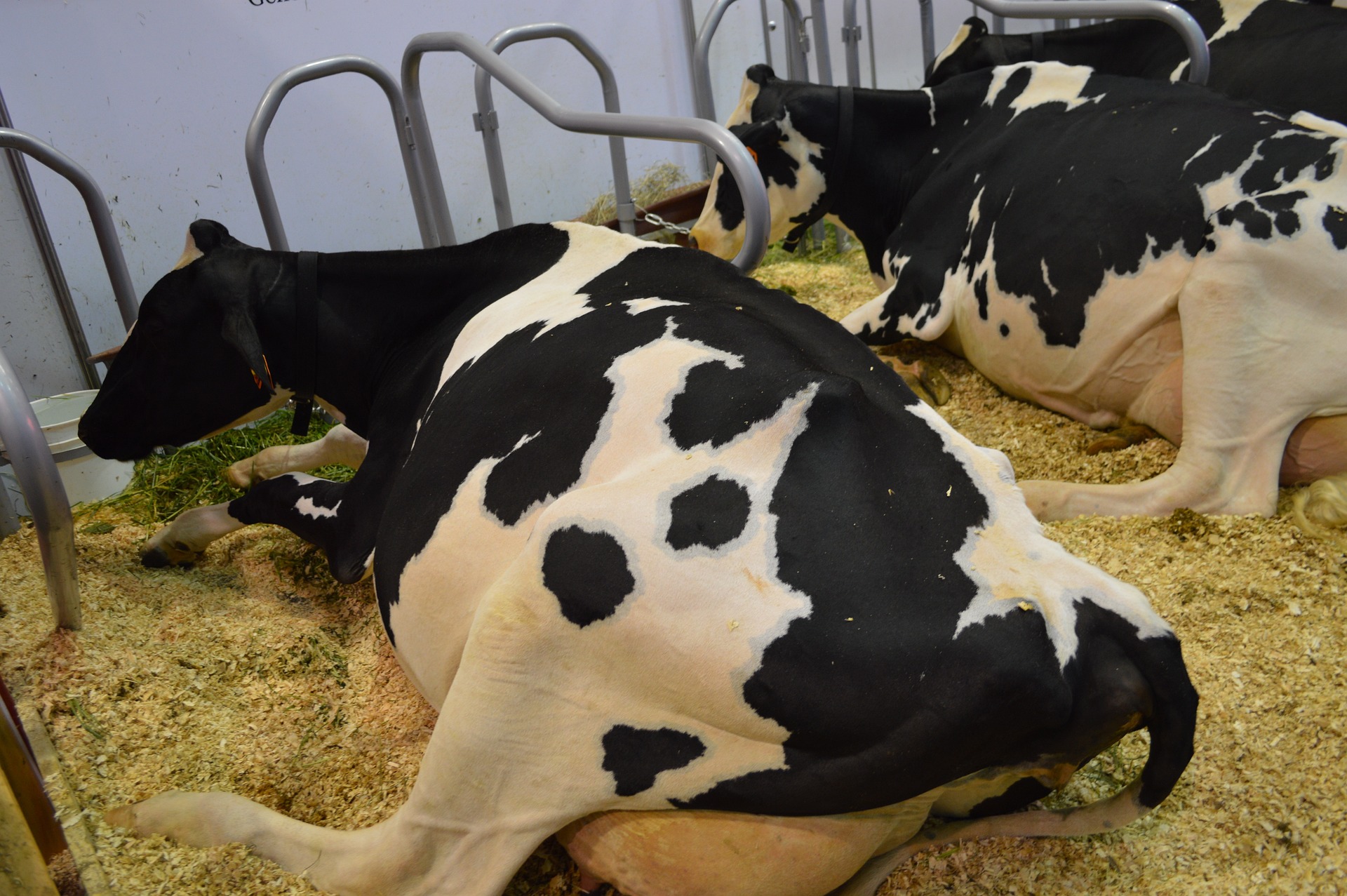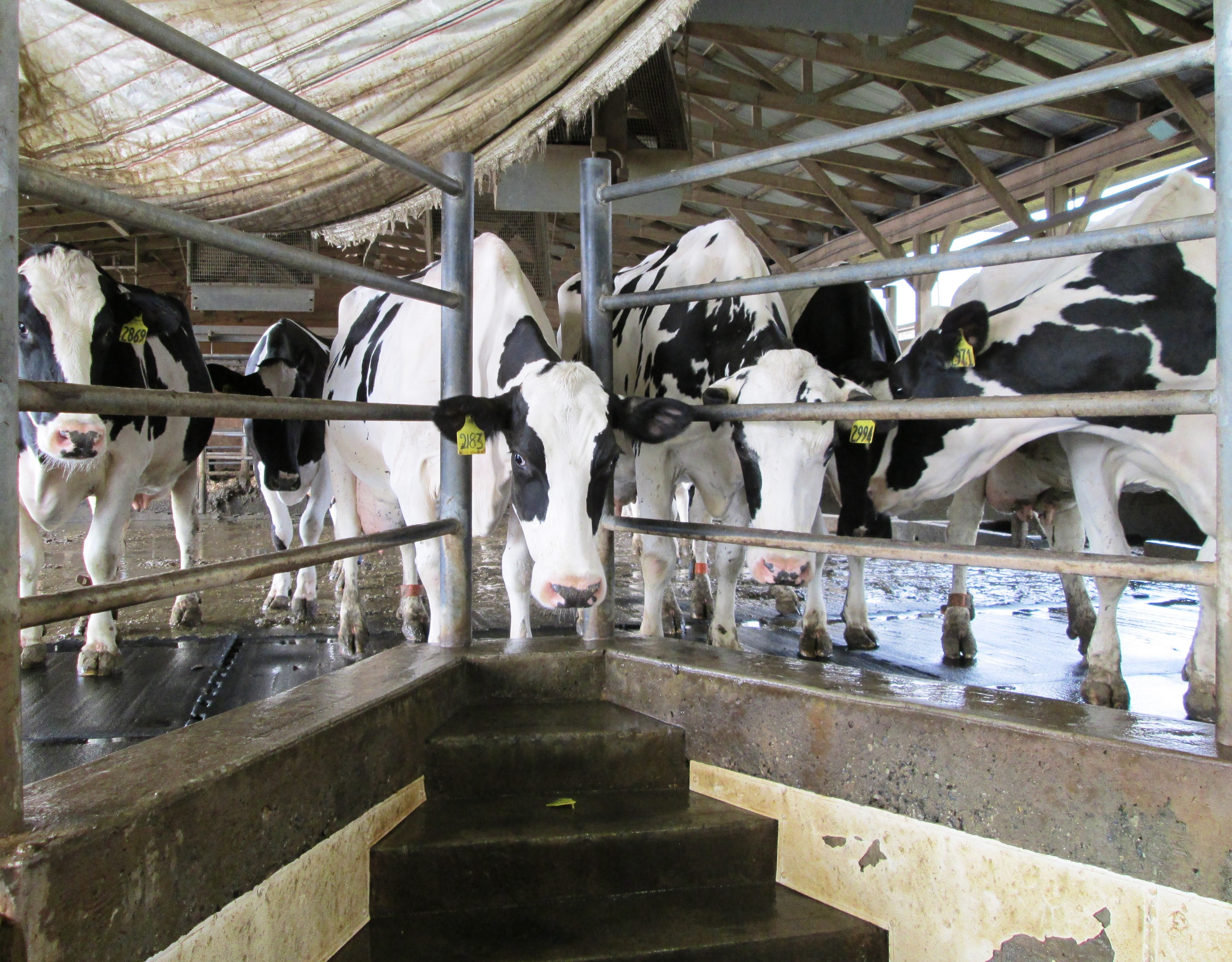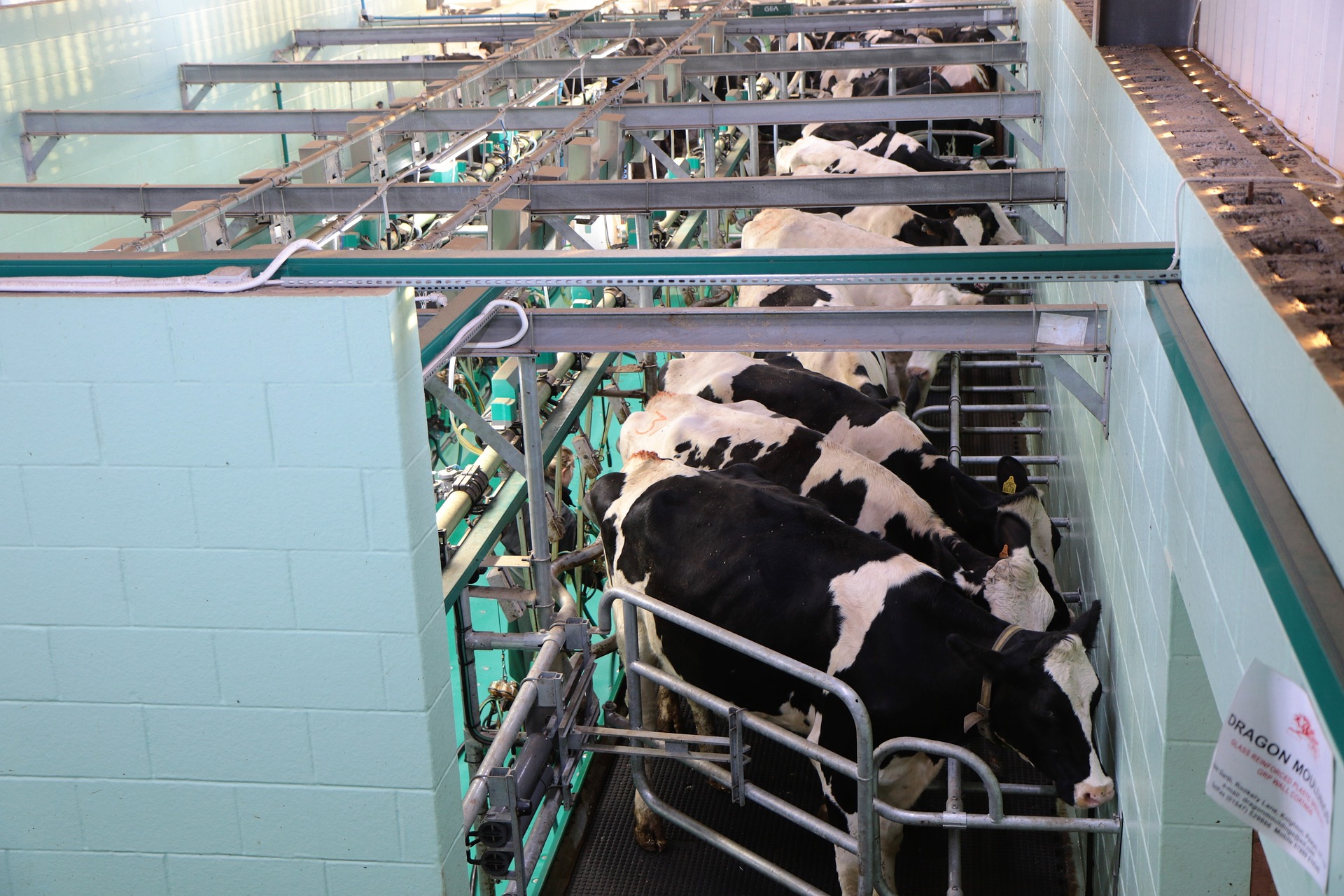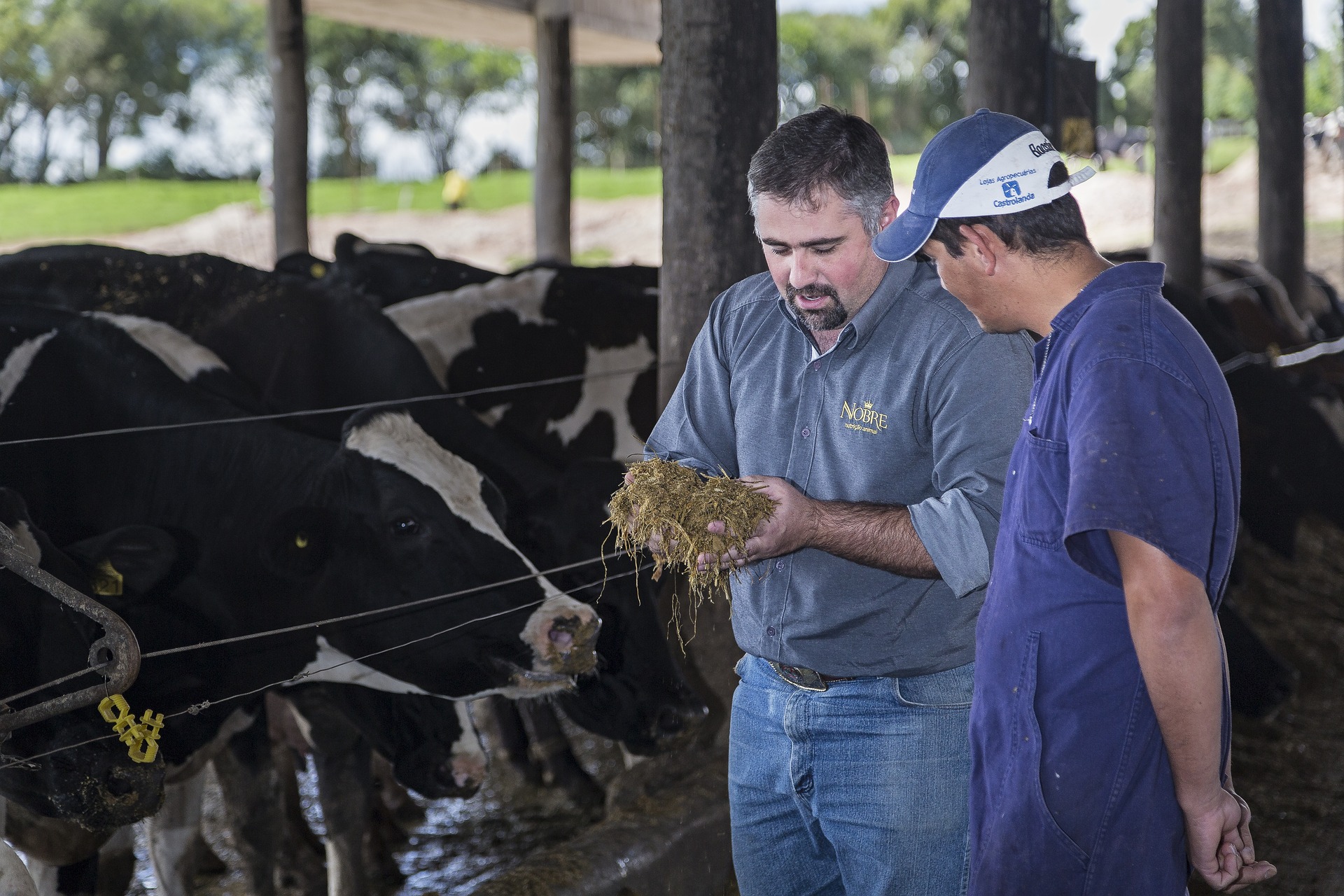VEGAN MYTHS ABOUT RUMINANTS
Are Cows Forced to Produce Milk?
A common belief by vegans is that dairy cows are forced to produce milk.
But are they really? Let’s discuss.
***Note: Not all buttons are active links! See below for details.
In Brief
For the TL;DR readers.
The belief that cows are forced to produce milk come from a steep ignorance of how dairy farming works and animal rights organizations that capitalize on this ignorance to get more people to join their cause. It also comes from human misinterpretation of how cows think, feel, and act.
Cows are bigger and stronger than most realize. They must be trained first to be brought into milk production. Training is with patience, persistence, and gentleness. Cows soon learn that being milked is a good thing, because it relieves the painful pressure they feel when their udders are full of milk.
Cows cannot be milked without their wilful cooperation. Well, they can, but it’s extremely stressful and a bad experience for both them and their human handlers. Instead, they must be of even temperament and comfortable being in regular, close proximity with their human caretakers to be easily comfortable with being milked out once or twice a day. This means literally forcing them to go to the milking parlour on a regular basis is never needed; they quickly learn to go there all of their own free will.
This is a reality in all dairy farms and small mixed farms all over the world.
Where Does This Belief Come From?
With the author well-versed and familiar with the arguments that vegans have created about the alleged “cruelty” of dairy farming, it’s not hard to point to where this belief came from.
People for the Ethical Treatment of Animals (PETA) is the first well-known, infamous vegan organization that has authored many articles about the “evils” of dairy farming. It is probably the organization responsible for the massive amount of propaganda and misinformation spread across all social media networks about animal agriculture.
The other source of this belief is the majority of people’s ignorance about dairy farming. This is a common theme noticed on all vegan myth-busting info pages, where those who have never visited a farm and know only what they know about farming from other vegan activists, not the farmers themselves, perpetuate these myths or half-truths.
The belief about dairy farming is that cows are, somehow, forced into milk production by unexplained means.
Many vegans have claimed that dairy cows are taken from the wild (wherever that is) and forced to remain in barns as they are hooked up to a milk machine 24/7 and have their babies (calves) taken away from them several times a year, with the calves immediately slaughtered for veal (their words, not the author’s).
Others claim (more correctly than previously mentioned) it’s a perpetual cycle of “abject cruelty” of calves growing to cows to produce milk and more calves.
But, the common theme is that cows are “forced” into milk production. Not just due to the false claim that they’re pulled from the wilds of… wherever, but due to the humanization of cows. In other words, coercing us to believe that cows are “just like us” and, therefore, “imagine what it’s like to be a dairy cow. Would you want to be milked every single day of your life until you’re sent away to have your throat slit?“
In trying to imagine life like a cow, people would automatically think–and believe–that no, they definitely wouldn’t want to be milked every day until their lives are [also forcibly] taken from them.
More troubling is that these claims are supported by so-called “raw footage” of animal abuse on dairy farms. Under-cover activists posing as dairy farm workers have installed or carried hidden cameras with the purpose of exposing the “terrifying truth” about dairy farming.
Animal rights organizations like PETA and Mercy for Animals, among others, capitalized on this footage–some of it legit, others fake with one or more workers paid to deliberately abuse animals–and used it to mark all dairy farms as evil. They also used them as “solid proof” that dairy cows were indeed forced to live such lives of cruelty and torture just so the rest of us could enjoy our dairy products.
Once again, the rest of society who did not know any better and were traumatized by such evidence, did not know any better other than to believe such misinformation and perpetuate it by sharing it with others.
However, those few who do (and did) know better work continuously to expose the lies and show that dairy cows are treated far better than people have been made to believe.
The Reality of Dairy Cows
The discussion above should surprise no one that most people have never been around real-life dairy cows before. Only when they’ve taken the opportunity to get up close and personal with cows would they appreciate how big they are.
A dairy cow is not a small animal, not by a long shot. Holstein cows, pictured multiple times on this page, weigh between 1,200 to 1,800 pounds and stand 5 to over 6 feet tall at the shoulder and three to four feet wide, depending on how full or pregnant they are. Their heads are as long as a human torso alone from poll to nose, and each hoof is the size of a small dinner plate.
Cow skin is twice to three times as thick as a human’s, making a big slap on the rump of a cow feels like a light pat on the shoulder to us. They’re also very strong, capable of lifting and throwing a 200-plus pound man over a fence with their head (as has happened many times before, though more commonly by beef [non-dairy] cows; regardless, beef and dairy cows are as powerful as the other).
Cows have a powerful kick that can break bones or cause severe bruising. They always use a single-footed round-house or front-forward kick (never launching up and back with both feet like a horse), which hurts a lot if your hand, head, arm, foot, or leg is in the wrong place at the wrong time.
Aside from those physical capabilities, cows are smart and capable of letting their human caretaker know when they don’t like something done to them. Kicking, balking (stopping in their tracks and refusing to move), moving away to avoid, trampling, running around frantically, or putting up a heck of a fight are all ways they’ll communicate their distress and dislike over whatever is being done to them.
But they’re also capable of learning and adapting. They soon figure out, over time, that whatever it was they didn’t like or felt fearful and uncomfortable with wasn’t so bad after all. If they’re fearful of people at first, calm, gentle training to show them that they have no need to panic and be afraid “desensitizes” them to where they’re now more comfortable around people.
Training a heifer (or cow) to milking is another example, but more prevalent to this page. With time, patience, dedication, and persistence, as well as gentle (as possible for an animal 10x your size and strength) handling, soon she learns that it’s a good thing. She learns it’s especially good when her udder is so swollen from so much milk than the milking event takes a lot of pressure off.
No doubt, for those who are absolutely convinced that cows both hate where they live and what they do, this is all very hard to believe. But, the cows don’t lie. Dairy cows literally look like they don’t mind one bit where they live or what they do. When they’re just standing around chewing their cud, or laying idly by, or eating, or using the brush scratching machine the farmer installed just for them, those are all signs that they’re not living in fear or acting like they don’t want to be there in the first place.
Why is this? It’s due to a mutual cooperation between them and the farmer.
The Requirement of Co-operation
It’s entirely doubtful that anybody who believes this myth of “cows are forced to be milked” has ever been around cattle that want nothing to do with humans before. Especially in confined quarters. And, especially in trying to milk said “wild” cows.
Producers that have had to milk this kind of uncooperative, not-exactly-tame cow (primarily beef) must have the facilities to handle her. Putting her in a squeeze chute where she cannot move forward, backward, or side-to-side, and where the back legs are hobbled up (or one back leg tied up so she can’t kick and fight the hobbles), her tail tied up and out of the way, and her head locked in a head catch is the only way to milk such a cow.
Even then, she’ll still be on the fight to try to get away from the clutches of these untrustworthy two-legged beings. She’ll still try to kick, move around, fight the head catch, snort or anything she can to make it that much harder for the person trying to milk her to try to milk her!
Talk about being uncooperative! Let’s not forget that she would be hard to catch and put into the chute in the first place, requiring a little bit of a “chase” to get her into the handling system.
Not only that but that cow may not produce much, if any, milk in the first place. When she’s so stressed out and fighting to escape, the hormone that induces milk let-down (oxytocin) is going to be significantly reduced in contrast to the adrenaline that is surging through her body.
This would happen if you forced a cow to produce milk.
And no, this is not how it happens on dairy farms.
“Wild cow milking,” a common rodeo event, may be the best and only example of “forcing a cow to produce milk.” A team must rope a “wild cow” (usually a beef cow that hasn’t had much human contact) and have control of her long enough for one of the team members to strip some milk into a cup. It’s easier said than done! The team that can do it the fastest wins. (Image source: Wikimedia Commons)
That’s why it’s absolutely crucial that dairy farmers have cows that are easy to handle, docile, and used to people. Though dairy cows aren’t nearly as tame as house pets nor as petting zoo animals, they’re still quiet and adept at living in confinement for most of their lives and seeing people on a regular basis.
Dairy farmers have actively selected for such cows. It not only makes it easier to milk them, but safer too.
Through such selection, farmers have been able to “find” cows that can cooperate with them. This isn’t a forced type of cooperation, because that is exactly what was previously described above. Instead, it’s a form of mutual cooperation that has been worked on for generations.
Without this cooperation, dairy farming, let alone a human being able to milk a cow and the cow allowing the human to take her milk, would never have progressed as much as it has. It would’ve died out long, long ago. It would’ve been passed off as impossible and too dangerous to attempt.
But, with the right cows and the right way to take care of and raise them, it’s anything but impossible and too dangerous.
Besides, how can you expect dairy cows to want to come to be milked if they’re forced to do so?
Sounds pretty impossible, to be honest…
No Forcing Allowed… Nor Needed!
Dairy cows either are great at being trained or they’re really smart or… they’re treated so well that they’re eager to be milked on a regular basis.
Upon visiting multiple farms and seeing how they do their milking, consistently, it’s observed the milking cows standing patiently waiting at the gate entrance to the parlour to be milked. No farm has cows where they must be “given a good ol’ kick in the rear” to get sent to the milking parlour. Not one.
If cows were forced to produce milk, they wouldn’t be like this. They’d have to be chased in; they’d have to be kicked and poked and prodded to get into the milking parlour to be milked. They would be at the opposite end of the parlour gate when it’s milking time.
But this doesn’t exist on the dairy farm!
Why? Forcing cows makes them associate the milking parlour with bad things to avoid at all costs. In order to avoid this, the dairy farmer teaches the cows (and heifers) to associate it with good and pleasant things in order to encourage cows to come on their own and want to stay there for the duration of their milking time.
This requires food rewards, calm and gentle handling, patience, and dedication to their well-being.
An increasing number of modern dairy farms have installed robotic milkers, allowing cows to come in and be milked whenever they want.
You read that right.
These robotic milkers require almost no human intervention when milking cows. The exception is for regular maintenance of the machines and to keep track of what data is coming from each cow.
The cows will wait patiently in line for their turn to be milked. Some cows like it so much that they’ll try repeatedly, several times a day, to be milked even though it’s not their turn yet.
As a reward/distraction for their arrival at the machine is some grain mixture as a treat. While they chow down on that, the machine cleans and disinfects their teats, attaches the suction cups to each teat, then begins milking. Once done, they automatically detach. The teats and udder is cleaned again, and the cow is released.
Not once is she fighting the whole process. A heifer kinda new to the process might lift her feet up a little bit, but for the most part, it’s not a huge fight, as activists want you to believe.
Dairy Cows are Not Forced to Produce Milk
It’s apparent from visits to multiple dairy farms as well as active social media dairy farmers such as IowaDairyFarmer and TDFHonestFarming that dairy cows are definitely not forced to produce milk.
Forcing cows to produce milk only creates unwanted and unnecessary stress. Stressed cows don’t produce much if any, milk. They aren’t happy or content. Nor will they ever come readily, on their own, to the milking parlour or robotic milker if the activists are telling the truth.
This is the biggest tell-tale sign of good dairy cow welfare: that dairy cows willingly come and wait to be milked. Nobody can force cows to do that.
It has to take letting those cows understand that good things happen when they come to the parlour (or robot-milker) to have them want to come to it and stay for as long as they have to, or to have to be kicked out by the farmer or hired hand for staying too long!
Count this myth as completely busted and untrue.


